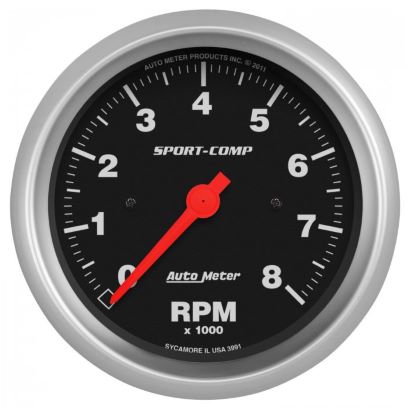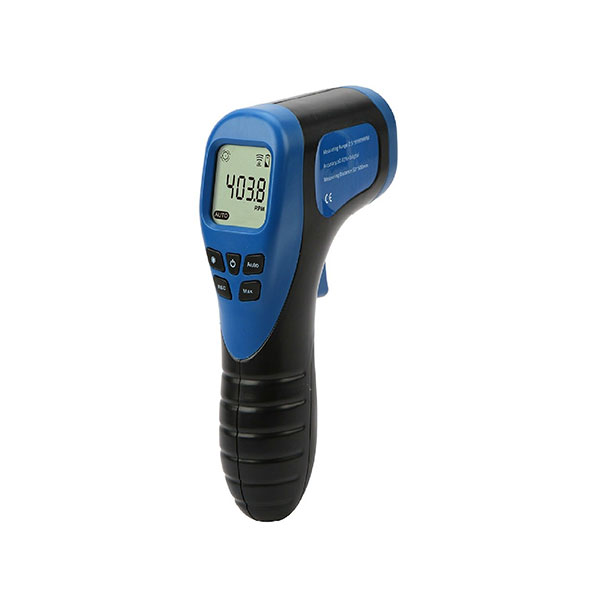Boost Your Driving Experience with a Trusted Tachometer
Boost Your Driving Experience with a Trusted Tachometer
Blog Article
The Importance of a Tachometer in Keeping Track Of Engine Speed and Efficiency in Automotive Applications
In the world of automobile design, the tachometer stands as a critical tool in the chauffeur's collection, supplying a direct window right into the inner functions of a vehicle's engine. Beyond its feature as a simple gauge of transformations per min (RPM), the tachometer acts as a vital tool for lovers and experts alike, providing real-time understandings into engine performance and health and wellness. Understanding the importance of this tool surpasses surface-level monitorings, diving into the complex partnership between engine speed, power outcome, and overall driving experience. As we check out the complex role of the tachometer in automotive applications, a deeper recognition for its effect on lorry dynamics and performance starts to emerge.
Significance of Monitoring Engine RPM
Keeping track of engine RPM, or transformations per min, is a crucial element of automobile maintenance and efficiency analysis. Engine RPM directly associates with the rate at which the engine's crankshaft revolves, suggesting exactly how rapidly the engine is running - tachometer. By monitoring RPM, mechanics can assess the wellness of the engine, detect potential concerns, and fine-tune efficiency. An uncommon RPM analysis might signal problems such as engine misfires, damaged ignition system, or problems with the fuel distribution system. Continually high RPM analyses could show hostile driving practices or the need for a greater gear change to improve fuel performance.
In addition, keeping an eye on engine RPM is important for efficiency analysis in racing and high-performance cars. In recap, monitoring engine RPM is not only crucial for identifying issues however additionally for maximizing engine performance in various vehicle applications.

Benefits of Real-Time Data
In vehicle applications, real-time information plays a crucial role in offering immediate insights into the performance and condition of the automobile. By constantly monitoring various parameters such as engine speed, temperature, fuel consumption, and a lot more, real-time data uses numerous advantages that add to enhanced performance and safety and security when driving.
One significant benefit of real-time information is its ability to sharp vehicle drivers and service technicians to any type of abnormalities or problems immediately. This aggressive strategy enables quick recognition of prospective problems, allowing for prompt treatments to avoid more damage or breakdowns. In addition, real-time information helps with efficiency optimization by providing go right here instant comments on driving behaviors and engine performance. Drivers can readjust their actions in real-time based upon this info to accomplish better gas economy and prolong the life expectancy of their car.

Moreover, real-time data plays an essential duty in contemporary automobile diagnostics, allowing specialists to quickly diagnose and resolve malfunctions. This leads to lowered downtime, lower upkeep prices, and ultimately, enhanced overall vehicle reliability and durability (tachometer). By taking advantage of the power of real-time data, automotive stakeholders can make enlightened decisions that favorably influence both the performance and longevity of the lorry
Effect On Equipment Shifts
The tachometer plays a critical role in optimizing gear changes by offering real-time engine rate data to the driver. When coming close to the redline on the tachometer, it signifies the motorist to upshift to avoid over-revving the engine and causing possible damages.
Furthermore, the tachometer aids in achieving smoother equipment changes, especially in manual transmissions. By keeping an eye on engine rate, vehicle drivers can execute equipment shifts at the optimal RPM array, lowering jerking motions and minimizing wear on the transmission components. This precision in gear changes not just boosts driving convenience but likewise adds to sustain performance.
Enhancing Gas Performance
Provided the important duty the tachometer plays in maximizing gear changes for performance and engine health, it directly contributes to making best use of gas performance in automobile applications. By supplying real-time feedback on engine rate, the tachometer assists motorists in keeping one of the most efficient RPM range for gas economic climate. When motorists visit this site consistently check the tachometer and adjust their motoring habits as necessary, they can stay clear of unnecessary fuel intake triggered by over-revving or lugging the engine.
Additionally, the tachometer assists motorists determine the most fuel-efficient gear to be in at any provided moment, preventing the engine from functioning harder than necessary. In conclusion, the tachometer offers as a valuable device in improving like it fuel efficiency by promoting optimum driving practices and recognizing areas for renovation in the vehicle's performance.

Making The Most Of Engine Durability
The tachometer's duty in keeping track of engine rate and efficiency is instrumental in making certain the durability of automotive engines. Checking the tachometer enables chauffeurs to stay within the suggested RPM range for their vehicle, avoiding unnecessary strain on the engine and prolonging its lifespan.

Conclusion
In conclusion, the tachometer plays an essential role in monitoring engine speed and performance in automotive applications. By giving real-time information on RPM, it permits reliable gear shifts, boosted fuel effectiveness, and taken full advantage of engine durability. This device is necessary for preserving ideal engine performance and ensuring the general capability of a car.
Report this page